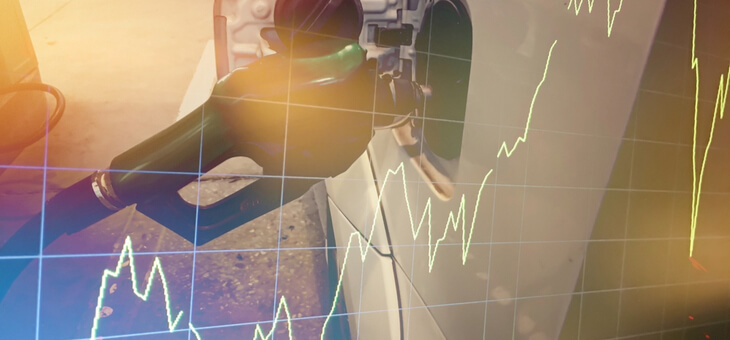The astronomical rise in the price of fuel has sent inflation through the roof, according to the latest Consumer Price Index (CPI) figures.
It seems everybody is feeling the pinch and now there is data to back that up.
The CPI rose 2.1 per cent in the March quarter and jumped by a whopping 5.1 per cent over the past 12 months – the largest annual change since June 2001, when the introduction of the GST lifted headline inflation by 6.1 per cent.
Compiled quarterly by the Australian Bureau of Statistics (ABS), the CPI gives an overall view of the prices of goods and services.
Read: Tough choices for many as energy costs set to increase
The main culprit for such a large rise is the price of petrol, which experienced a 35.1 per cent increase in the quarter, with petrol stations in some areas charging more than $3 per litre. The rise is being driven by a global shortage of oil due to Russia’s invasion of Ukraine.
“The CPI’s automotive fuel series reached a record level for the third consecutive quarter, with fuel price rises seen across all three months of the March quarter,” says Michelle Marquardt, ABS head of price statistics.
“Annual price inflation for automotive fuel was the highest since the 1990 Iraqi invasion of Kuwait.”
With fuel needed across the supply chain for almost all products, the price rise is driving inflation in other sectors.
Read: Supermarket lowers prices with bulk buy range
Big rises were also recorded across the food group (2.8 per cent), reflecting high transport, fertiliser, packaging and ingredient costs, as well as COVID-related disruptions and herd restocking due to favourable weather.
Main contributors to the rise in food prices included vegetables (6.6 per cent), waters, soft drinks and juices (5.6 per cent), fruit (4.9 per cent) and beef (7.6 per cent).
Elsewhere at the supermarket, non-food household items such as toilet paper and paper towels were up by 6.7 per cent.
Read: Super bounces back for first time in 2022
Ms Marquardt said new dwellings and the cost of education were also big contributors to the March CPI.
“Continued shortages of building supplies and labour, heightened freight costs and ongoing strong demand contributed to price rises for newly built dwellings,” she said.
While Australians are already facing extraordinary cost-of-living pressures, even more pain may be on the way in the form of higher mortgage payments.
After leaving the cash rate at a historic 0.1 per cent for the past 17 months, the Reserve Bank of Australia (RBA) is expected to finally raise the rate on 3 May.
“The RBA should, and likely will, raise interest rates next week by 15 basis points,” says BetaShares economist David Bassanese.
A basis point (denoted as bps) equals 0.01 per cent, or 1/100th of a per cent. So a jump of 100bps would be a jump of one full percentage point.
If the RBA sticks to the predicted 15bps increase, this will bring the rate up to 0.25 per cent, which, depending on the amount of your loan, could mean hundreds of dollars extra in monthly payments – at a time when many Australians simply can’t afford it.
If you enjoy our content, don’t keep it to yourself. Share our free eNews with your friends and encourage them to sign up.

